Speaking Visually
︎ Print, Editorial
2021
While one can choose to shut off all the linguistic outlets of communication, it is impossible to circumvent nonverbal communication as the body keeps sending signals intentionally or subconsciously. Nonverbal cues become a powerful tool for controlling, organizing, directing, and coordinating in any field that significantly involves interpersonal relationships and group dynamics.
Speaking Visually focuses on the importance of nonverbal communication.


Beginning with the contents, only a few people realize how loud their expressions are and tell us to be kind with what people wordlessly say.
The narrative of the book is divided into two parts.
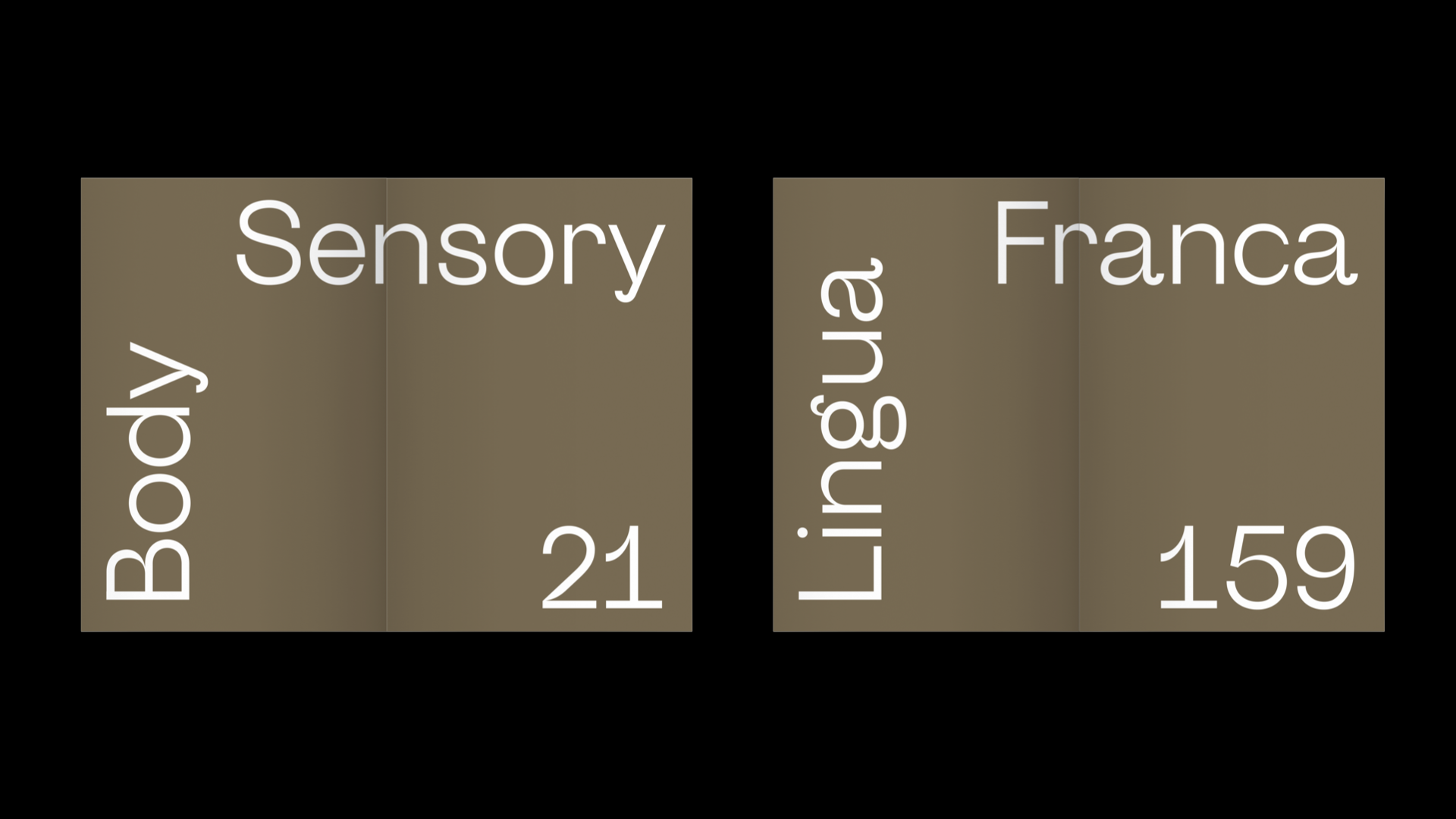

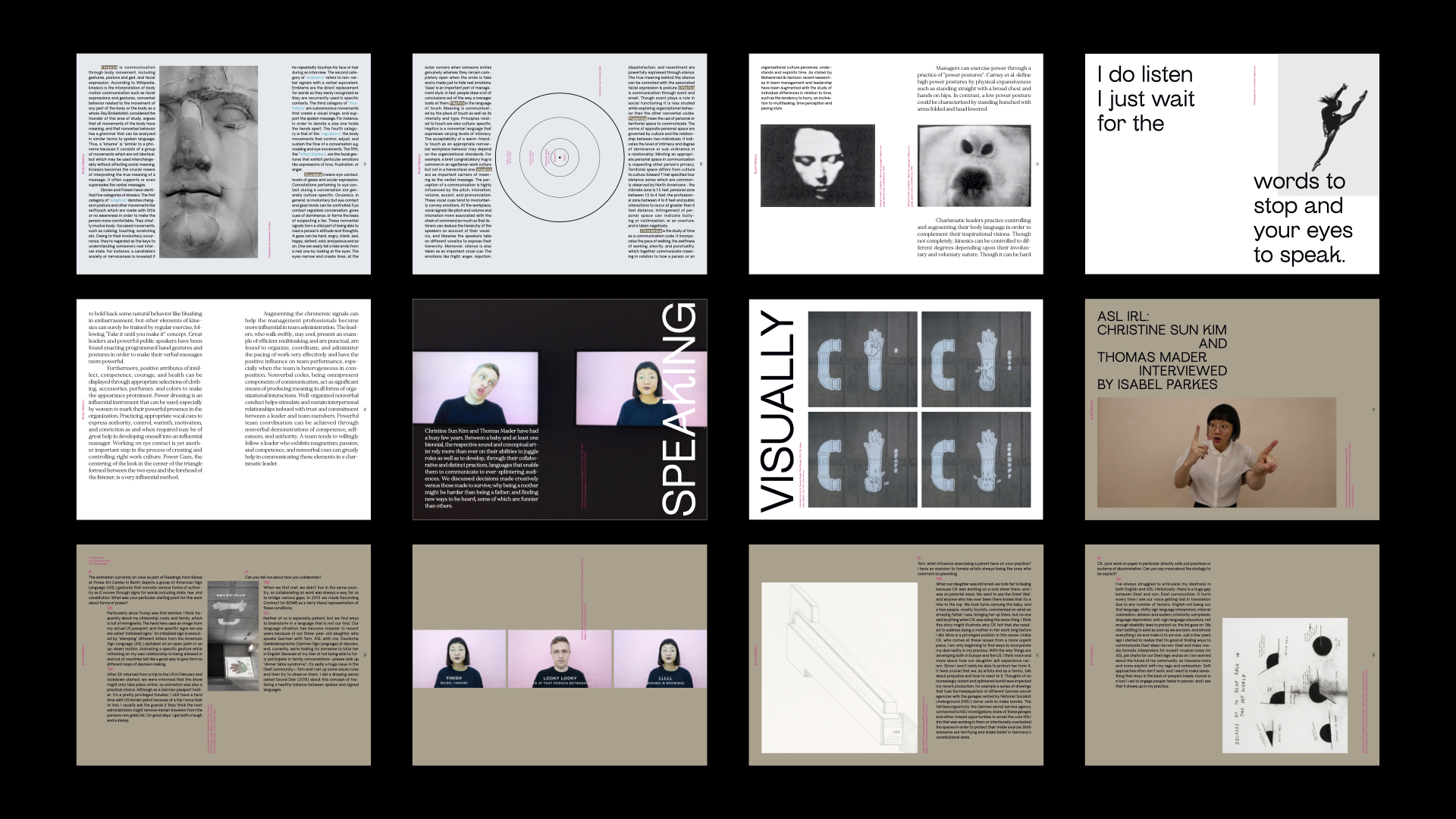
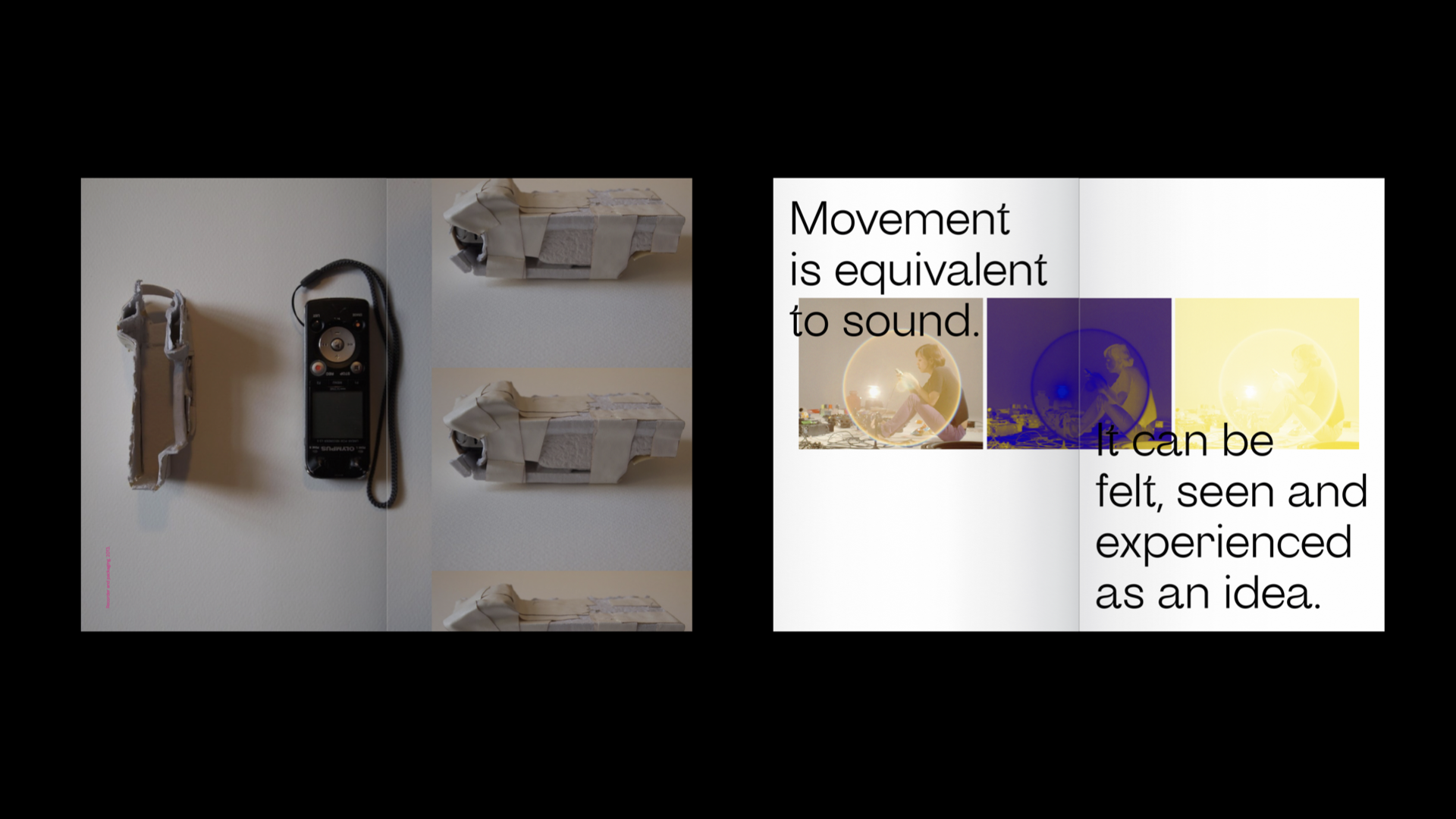
This first section of the book starts with a look at nonverbal communication forms related to our body and senses, such as sign languages and facial expressions, along with definitions and illustrations explaining the details.
This part of the book also demonstrates to the audience how to speak and perform visually through two groups of artists.

The first group of artists is Christine Sun Kim and Thomas Mader. Christine Sun Kim is an American sound artist based in Berlin. Kim's practice considers how sound operates in society. Musical notation, written language, American Sign Language, and the use of the body are all recurring elements in her work. Since 2013, Christine Sun Kim and Thomas Mader have collaborated on a shared practice addressing the complexities of communication in various formats.

The second group of artists is Primeaux-O’Bryant and Kazen-Maddox. Primeaux-O’Bryant is a deaf actor and dancer; Kazen-Maddox is a hearing dancer and choreographer who is, thanks to seven deaf family members, a native speaker of American Sign Language.
The second part of the book is called Lingua Franca. Lingua Franca means a language adopted as a common language between speakers whose native languages are different.
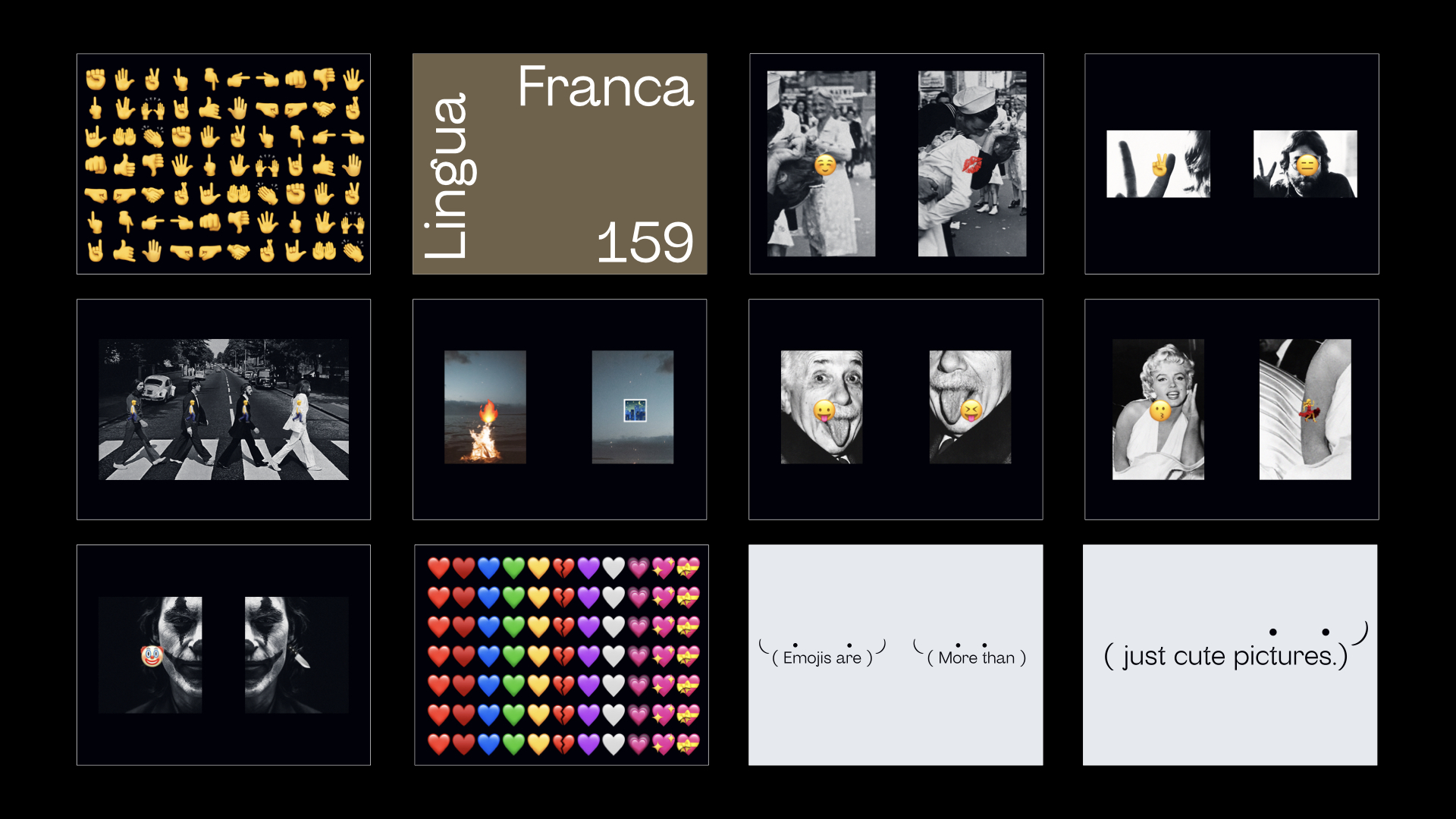

This section works as an emoji user guide, explaining the origins, histories, and functions of emoji. And the goal of these contents is to make emoji users aware that emojis are more than just cute pictures or symbols.



The primary purpose is to draw attention to the communication content that cannot be expressed in words directly.
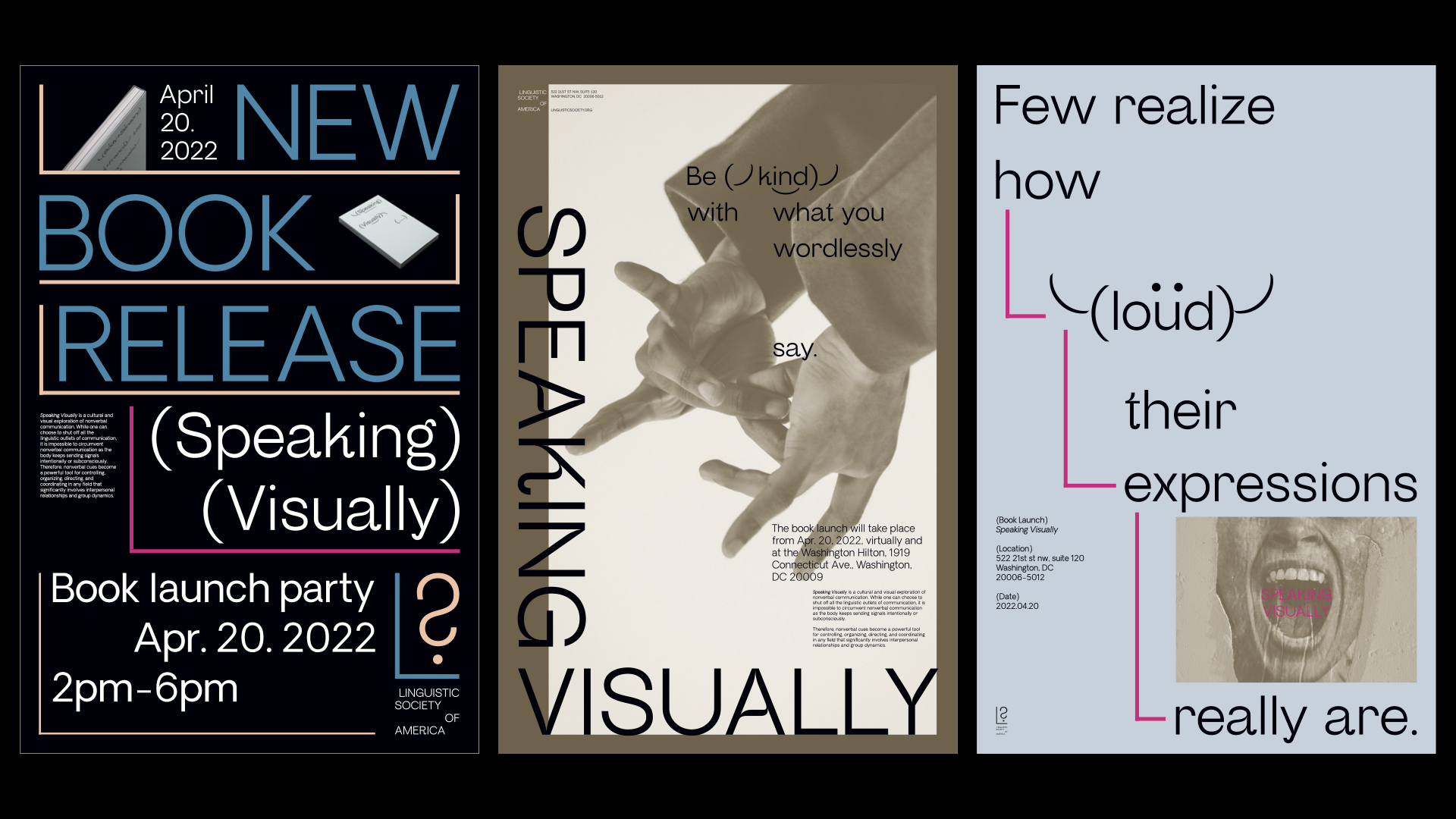
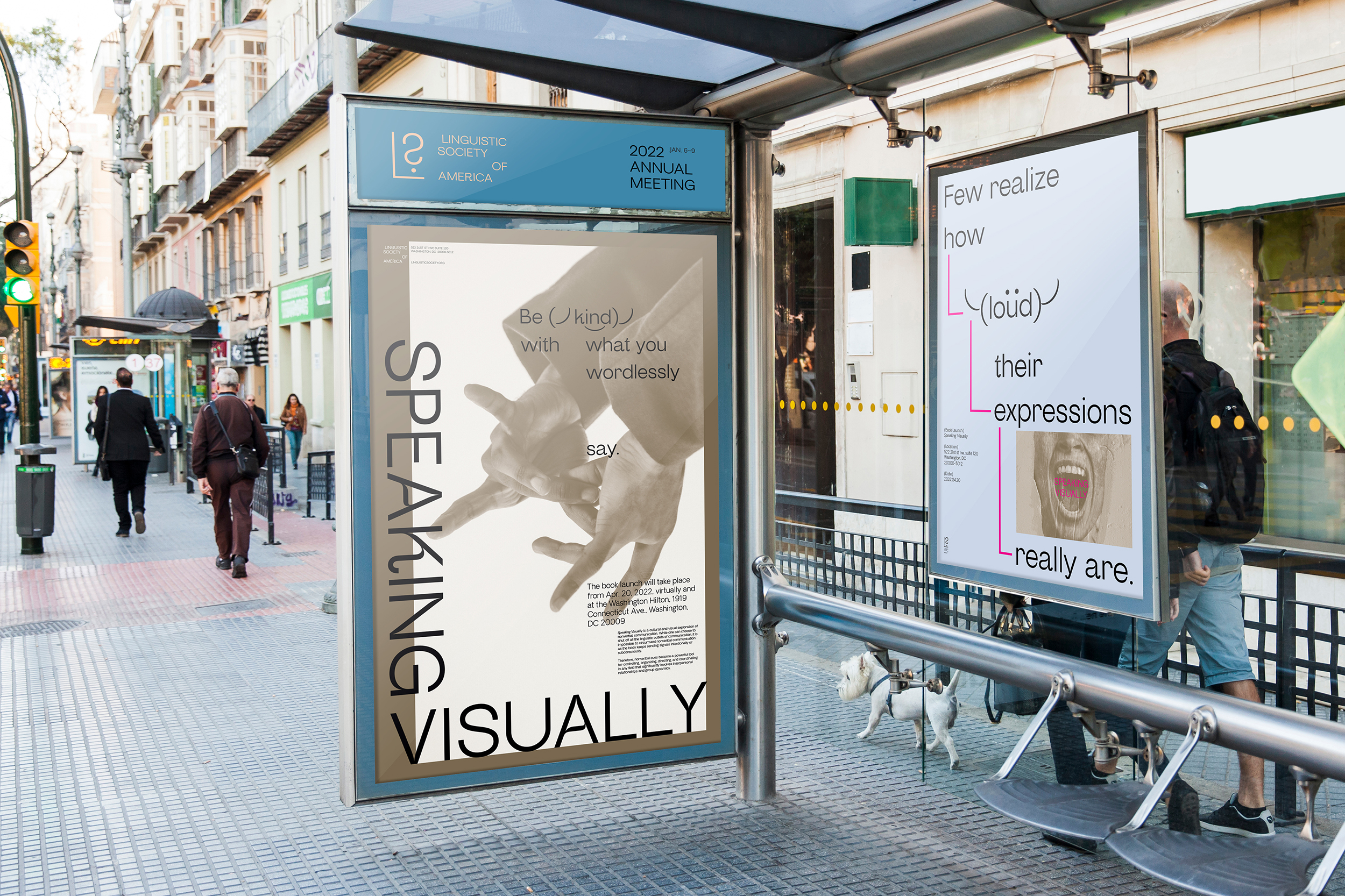

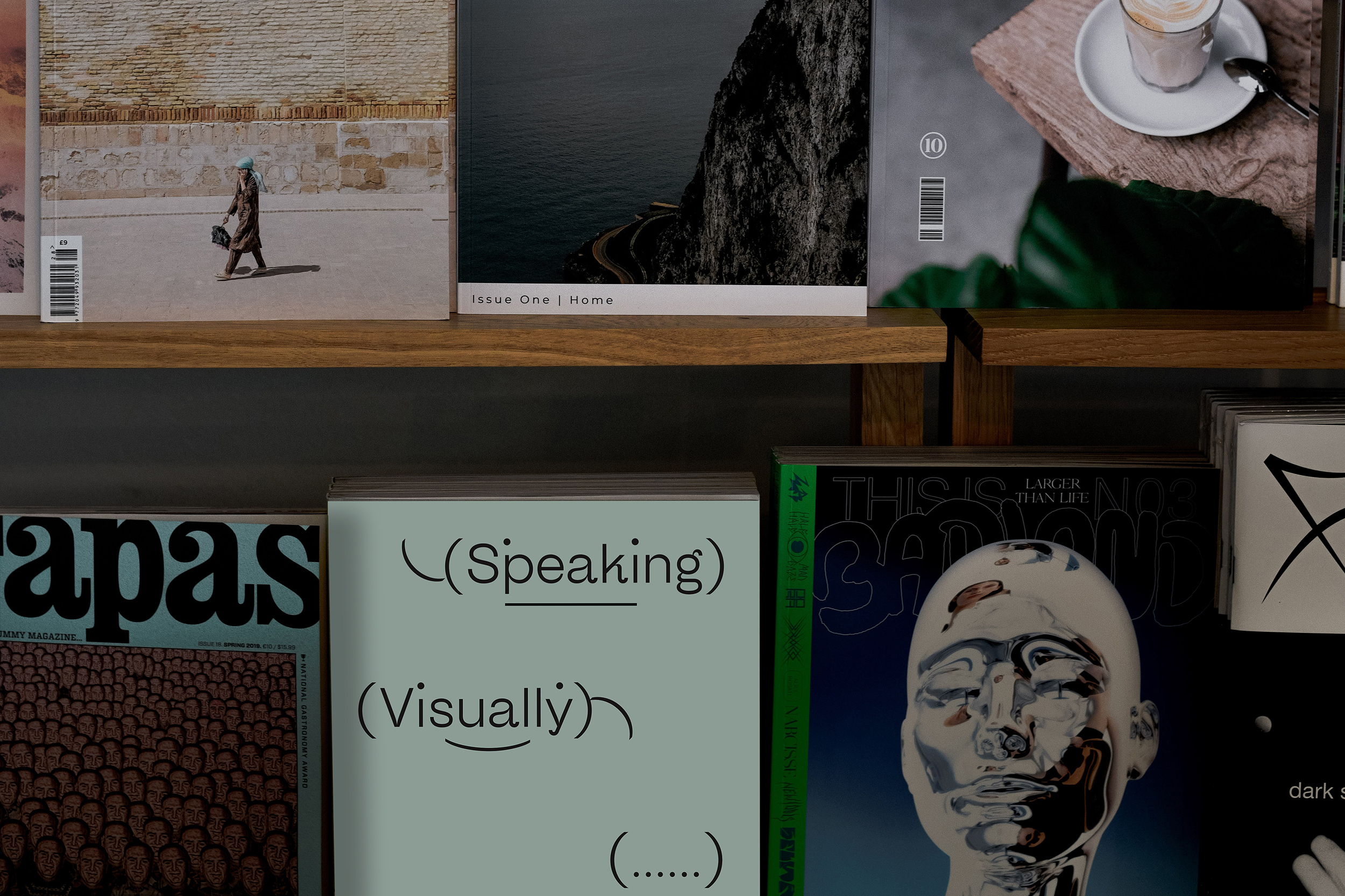

︎︎︎ Back to Top
